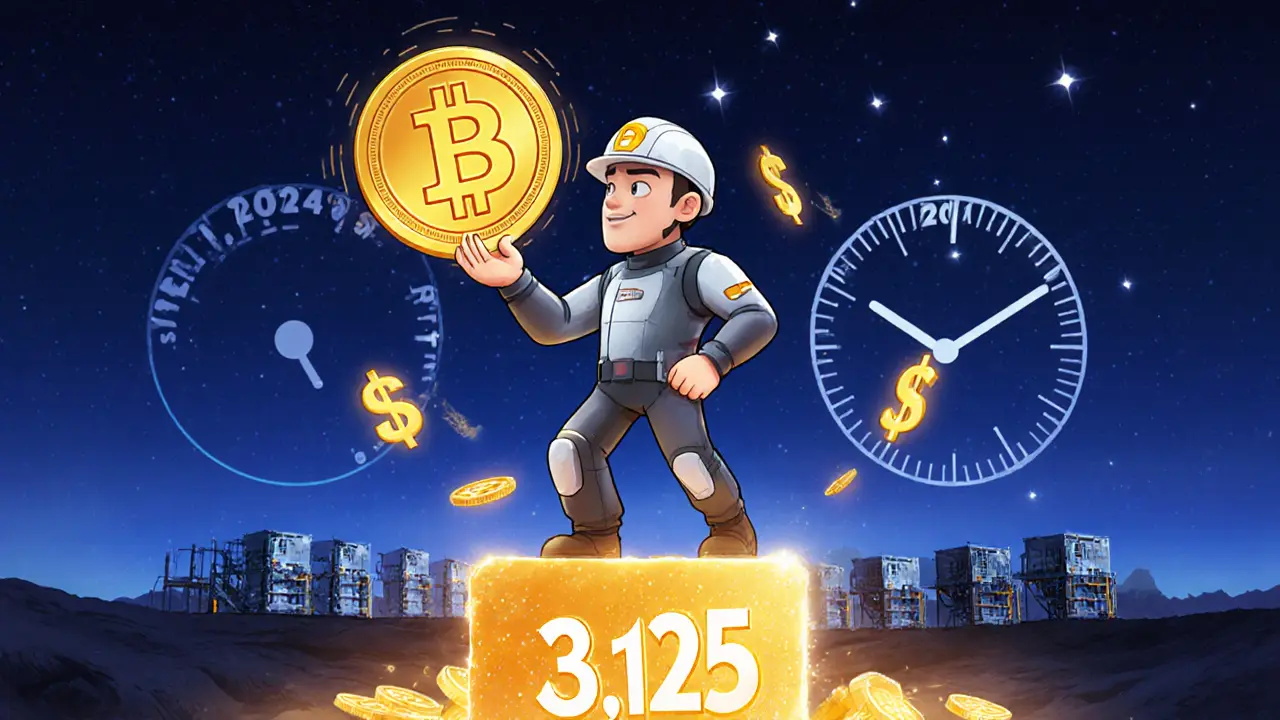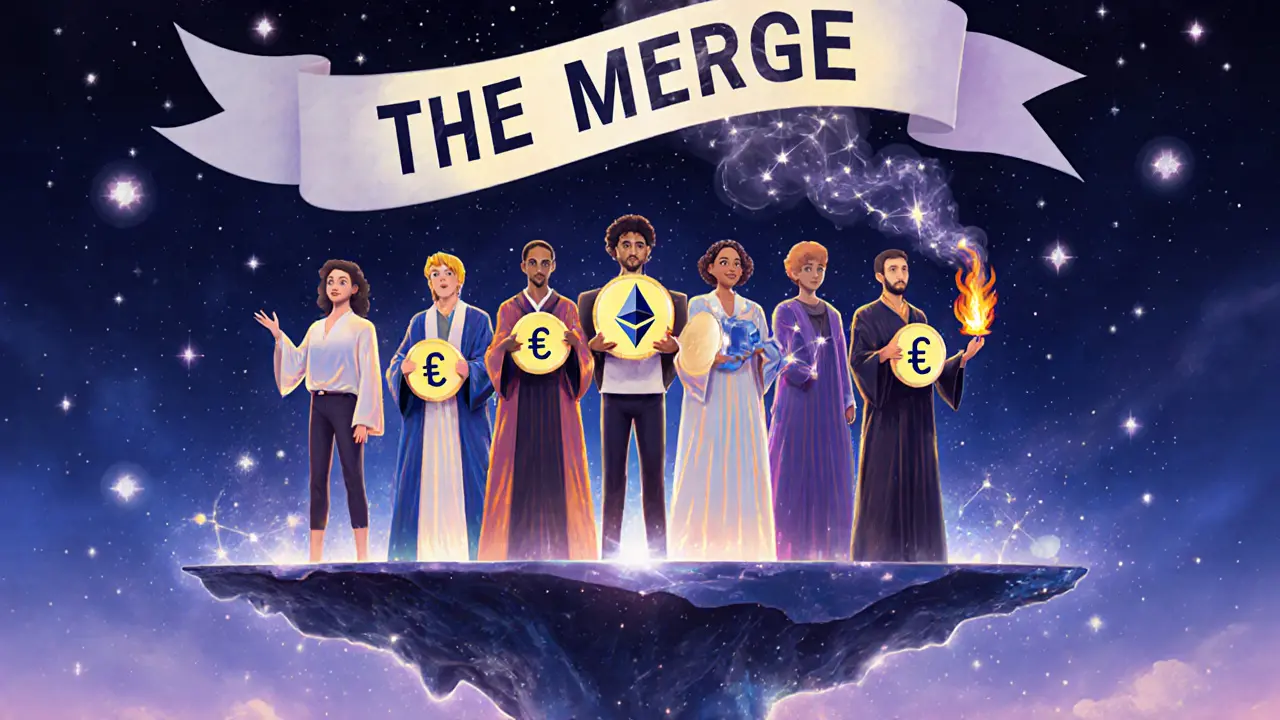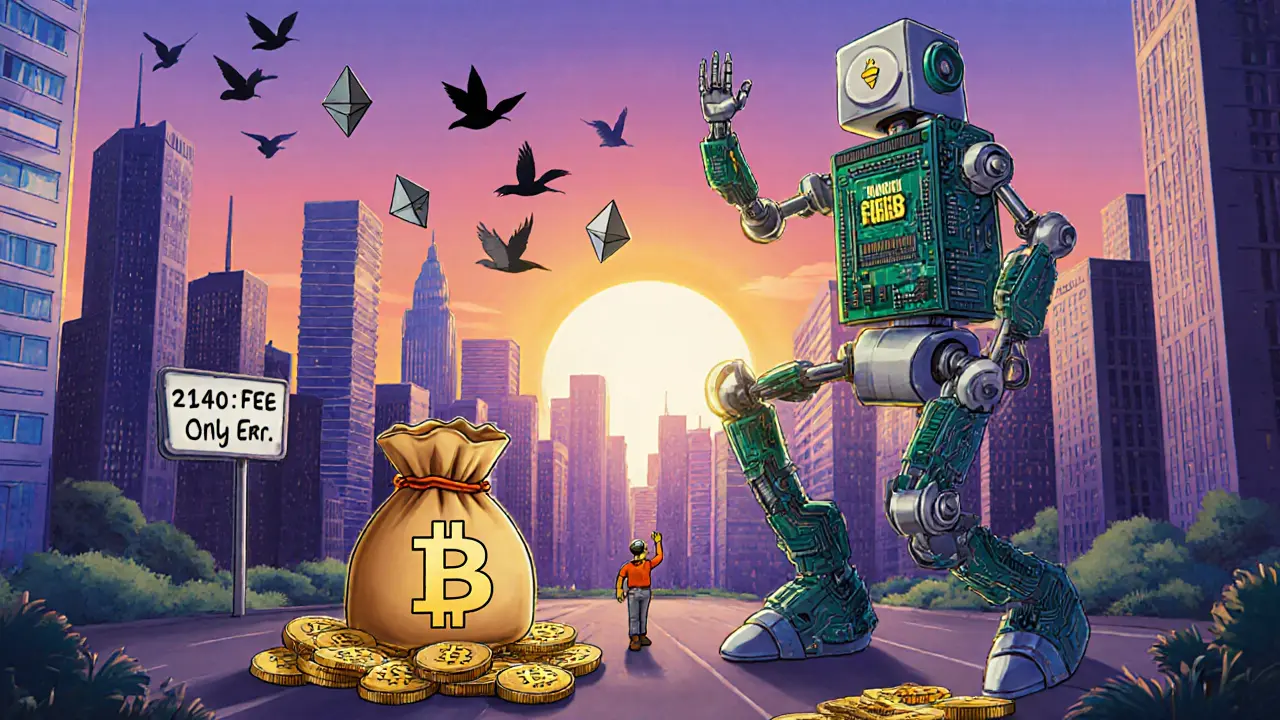 Nov, 2 2025
Nov, 2 2025
When you hear about Bitcoin or Ethereum being mined or staked, you might wonder: who gets paid, and how? The answer lies in block rewards - the lifeblood of most blockchain networks. Without them, there’d be no incentive for people to secure the network, validate transactions, or keep the system running. Block rewards aren’t just a bonus; they’re the economic engine that keeps cryptocurrencies alive.
What Exactly Is a Block Reward?
A block reward is the payment given to a miner or validator every time they successfully add a new block to the blockchain. It’s the digital equivalent of a paycheck for doing critical work - verifying transactions, preventing fraud, and maintaining the ledger’s integrity. This reward has two parts: newly created coins (called the block subsidy) and transaction fees from users who sent money in that block. For example, when Bitcoin miners solve a complex math puzzle and add a block, they get 3.125 BTC as the block subsidy, plus all the fees from the transactions included in that block. In Ethereum’s current system, validators who stake ETH get rewarded with newly issued ETH and transaction tips. The exact amount changes depending on how many people are staking and how busy the network is.Why Do Block Rewards Exist?
Block rewards were designed to solve a big problem: how do you get people to care about securing a decentralized system when no one’s in charge? Satoshi Nakamoto’s 2009 Bitcoin whitepaper introduced block rewards as a clever solution. Instead of relying on banks or governments, Bitcoin pays participants directly with new coins. There are three main reasons block rewards matter:- Security: The more money miners or validators stand to earn, the more they’re willing to spend on powerful hardware or lock up their own funds. This makes it expensive for bad actors to attack the network.
- Controlled supply: Block rewards slowly introduce new coins into circulation. Bitcoin’s supply is capped at 21 million, and the reward halves every four years to prevent inflation.
- Network continuity: Even after new coin creation stops, transaction fees will keep the network running. Block rewards were always meant to be temporary - a bridge to a fee-based future.
How Bitcoin’s Block Reward Works (And Why It Halves)
Bitcoin’s block reward started at 50 BTC in 2009. Every 210,000 blocks - roughly every four years - it cuts in half. This is called a “halving.” Here’s the timeline:- 2009: 50 BTC per block
- 2012: 25 BTC (first halving)
- 2016: 12.5 BTC
- 2020: 6.25 BTC
- 2024: 3.125 BTC (most recent halving on April 20)

Ethereum’s Shift: From Mining to Staking
Ethereum used to work like Bitcoin - miners competed to solve puzzles and earned 2 ETH per block plus fees. But in September 2022, Ethereum switched to proof-of-stake in an event called “The Merge.” Now, instead of mining, users stake ETH to become validators. To join, you need 32 ETH (about $102,400 as of late 2025). Validators are chosen randomly to propose new blocks and verify others’ work. Their reward depends on how much ETH is staked across the whole network. The formula is roughly: reward = base factor × square root of total staked ETH. The big change? Ethereum no longer issues new coins at the same rate. Pre-Merge, issuance was around 4.3% annually. Now it’s closer to 0.5%. Plus, since EIP-1559 in 2021, most transaction fees are burned, meaning they’re destroyed instead of given to validators. This can make ETH deflationary - if fees burn more than new ETH is issued, the total supply drops.How Other Cryptocurrencies Handle Rewards
Not all blockchains follow Bitcoin’s model. Here’s how a few others do it:- Litecoin: Mimics Bitcoin’s halving but with a 84 million coin cap and faster blocks (every 2.5 minutes). Halvings happen every 840,000 blocks.
- Bitcoin Cash: Also uses halving, but with larger block sizes to handle more transactions per block.
- Cardano: Uses proof-of-stake with a fixed 0.3% annual inflation. Rewards are distributed from a treasury fund.
- Solana: Starts with 8% annual inflation, slowly dropping to 1.5% over 10 years. Rewards go to validators who process transactions quickly.
- Monero: After a one-time halving in 2022, it now gives a small “tail emission” of 0.6 XMR per minute forever to keep miners paid.
- Chia: Uses proof-of-space (hard drive storage) instead of computing power. Rewards are 1.6 XCH per block, with yearly reductions.
Transaction Fees: The Future of Block Rewards
Right now, Bitcoin miners still get about 98% of their income from the block subsidy. But that’s changing. As halvings continue, fees will become more important. In Q1 2024, Bitcoin transaction fees made up only 1.8% of miner revenue. But experts predict that by 2030, fees could make up over half of all miner income across major chains. For Bitcoin to stay secure after 2140, fees may need to reach $50-100 per block. That means users might pay $15-25 per transaction - a big jump from today’s average of under $2. Ethereum is already ahead of the curve. Validators now earn 65-80% of their income from transaction fees and tips, not new ETH issuance. That’s because the network is busy, and users pay more to get their transactions confirmed faster. This shift is critical. If fees don’t rise enough, miners might quit, and the network could become vulnerable to attacks. That’s why the Bitcoin community is debating whether to increase block sizes or find other ways to boost fee revenue.
Who’s Mining or Staking - And What It Costs
Mining Bitcoin isn’t something you do on your laptop anymore. It takes serious hardware. The Antminer S21 Hydro, released in 2024, costs $12,500 and uses 21.5 joules per terahash. Most miners now join pools like F2Pool or Antpool to share rewards and reduce risk. Staking Ethereum is cheaper in terms of equipment, but the barrier is higher. You need 32 ETH - around $102,400 - to run your own validator. Many people use staking services like Coinbase or Lido to pool their ETH and earn smaller rewards. According to a March 2024 survey of 1,200 Ethereum validators, 67% reported hardware failures as their biggest problem. A single day of downtime can cost over $1,850 in lost rewards. The industry is also becoming more corporate. In 2019, only 12% of Bitcoin blocks were mined by companies. By 2024, that number jumped to 37%. Big players like Riot Platforms and Marathon Digital now control a large chunk of the network.Global Impact and Regulatory View
Bitcoin mining consumed about 121.89 terawatt-hours of electricity in 2023 - more than the entire country of Argentina. That’s 0.55% of global power use. Critics say it’s wasteful. Supporters argue it’s a fair trade for a decentralized, censorship-resistant system. Governments are starting to regulate block rewards. The European Union’s MiCA law, effective December 2024, treats block rewards as taxable income the moment you receive them. The U.S. IRS has said the same since 2014: if you mine or stake crypto, you owe taxes on its fair market value at the time you get it. The global block reward market was worth $11.7 billion in 2023. Bitcoin accounted for $9.2 billion of that. As fees grow and halvings continue, that number could shift dramatically - possibly even surpassing current levels if adoption spikes.What’s Next for Block Rewards?
The future of block rewards isn’t about bigger payouts - it’s about smarter systems. Ethereum’s upcoming Prague upgrade (expected late 2024) will improve how validators earn from MEV (Maximal Extractable Value), potentially boosting their income by 8-12%. Meanwhile, Bitcoin’s community is quietly preparing for a fee-only future. If transaction volume grows enough - say, if Bitcoin becomes widely used for payments - fees could rise naturally. But if adoption stalls, security could weaken. A 2023 IMF paper warned that if Bitcoin’s block subsidy disappears and fees don’t rise fast enough, the network’s security budget could drop by 99%. That could make a 51% attack - where someone controls the majority of mining power - financially possible. The real challenge isn’t just technology. It’s economics. Can a decentralized network survive on user fees alone? Or will we need new models - like tokenized incentives, community funding, or hybrid systems? For now, block rewards remain the glue holding crypto together. They’re the reason the network exists, the reason people invest, and the reason transactions keep moving - even as the rules change.Are block rewards the same for all cryptocurrencies?
No. Bitcoin uses a halving schedule with a fixed 21 million cap. Ethereum switched to proof-of-stake and now issues new ETH based on how much is staked. Litecoin mimics Bitcoin but with a higher supply cap. Monero gives a small permanent reward to keep miners active. Each blockchain designs its reward system based on its goals - whether that’s scarcity, speed, decentralization, or sustainability.
Why does Bitcoin’s block reward halve every four years?
The halving was built into Bitcoin’s code by Satoshi Nakamoto to control inflation and mimic the scarcity of precious metals like gold. By reducing the supply of new coins over time, Bitcoin becomes harder to mine and more valuable as demand grows. It also ensures that the 21 million BTC cap is reached gradually, preventing early centralization of wealth.
Do I pay taxes on block rewards?
Yes. In most countries, including the U.S. and EU member states, block rewards are treated as taxable income. You owe taxes on the fair market value of the cryptocurrency the moment you receive it - whether you mine it, stake it, or earn it as a validator. Later, if you sell or trade it, you may owe capital gains tax on any increase in value.
Can I mine Bitcoin with my home computer today?
No. Bitcoin mining now requires specialized hardware called ASICs, which are expensive and use a lot of electricity. Even the most efficient home rigs can’t compete with industrial-scale mining farms. Solo mining is nearly impossible. Most people join mining pools, but even then, profits are slim unless you have access to cheap power.
What happens when Bitcoin’s block reward runs out?
When the last Bitcoin is mined around 2140, miners will rely entirely on transaction fees for income. The network will still function as long as users are willing to pay fees to get their transactions confirmed. The big question is whether those fees will be high enough to keep miners secure and motivated. If not, the network could become vulnerable to attacks. That’s why many experts believe Bitcoin’s long-term survival depends on widespread adoption and higher usage - not just speculation.
Hanna Kruizinga
November 4, 2025 AT 06:03David James
November 4, 2025 AT 13:43Shaunn Graves
November 5, 2025 AT 09:19Kaela Coren
November 5, 2025 AT 21:04Phil Higgins
November 6, 2025 AT 19:54Genevieve Rachal
November 8, 2025 AT 05:24Eli PINEDA
November 9, 2025 AT 02:26Debby Ananda
November 10, 2025 AT 08:52Vicki Fletcher
November 10, 2025 AT 11:02Nadiya Edwards
November 11, 2025 AT 02:30Ron Cassel
November 11, 2025 AT 09:35Malinda Black
November 12, 2025 AT 14:24ISAH Isah
November 13, 2025 AT 00:10Chris Strife
November 13, 2025 AT 01:36Wesley Grimm
November 14, 2025 AT 14:47Masechaba Setona
November 16, 2025 AT 06:59Kymberley Sant
November 16, 2025 AT 13:06Edgerton Trowbridge
November 16, 2025 AT 15:16